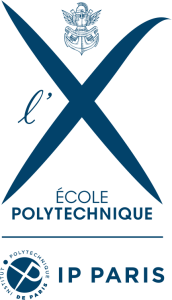The general purpose of this course is to introduce from a physicist's perspectives a number of mathematical tools that are necessary to follow the course PHY104: Electromagnetism and Light in S2 and subsequent Physics courses in Year 2. The course is divided in two parts, one devoted to notions of vector analysis and the other to Fourier analysis.
- Vector analysis:
The final objective of this part of the course is Stokes theorem, which is concerned with the integration of differential vector and scalar operators over general spaces embedded in two or three-dimensional Euclidean spaces R2 and R3. It plays a fundamental role in Electromagnetism through Gauss's law and Ampère's law, but also in Fluid Mechanics. To reach this stage, students are introduced to multivariable calculus, differentials, vector differential operators such as the gradient, divergence and curl, and line integrals. We then study Green's theorem in the plane as a warm up towards the divergence theorem and Stokes theorem, which conclude the first part.
- Fourier analysis
Fourier analysis is another cornerstone of modern physics. It initially rests on the study of periodic phenomena, which repeat themselves in space or time and can be described using so-called Fourier series of periodic functions. Our final objective in the second part of the course is to examplify the uses of such Fourier series to solve important partial differential equations, such as the wave equation and the heat equation. We conclude with a first glimpse into Fourier transforms for non-periodic functions.
- Profesor: Amselem Gabriel
- Profesor: De Wit Adinda Maite
- Profesor: Ferey Mathieu
- Profesor: Goutéraux Blaise
PHY_1S004_EP provides an overview of numerous physics concepts related to the description of light and of electromagnetic phenomena.
This course introduces the concept of fields in physics, in particular with the electric and magnetic fields, and develops students’ understanding of electrostatics, magnetostatics, circuits, geometrical and wave description of light. In addition, students explore concepts such as Coulomb’s law, Lorentz force, Gauss’ law, Ohm’s law, Faraday’s law, and others.
Upon completion of the course, the students will understand how the classical field theory of electromagnetism with the set of Maxwell equations can describe in a unified way many physical phenomena, from the propagation of light to electrostatics, magnetostatics, circuits and electromagnetic induction.
For the initial session, student evaluation is continuous throughout the semester with three written exams regularly spaced, and with equal weight. The third exam is at the end of the semester but is part of the continuous assessment. Each written exam has the same duration of 1 hour and 30 minutes, and covers a third of the course content. For these written exams, only a calculator is authorized, everything else is prohibited. To validate the course in the initial session, a minimum average of C for these 3 written exams is required. Additionally, short quizzes at the beginning of the tutorials will be graded and count as a bonus added to the final grade if the course is validated. This bonus can be up to two additional points in the final grade.
For the remedial session (if the course is not validated in the initial session), students are evaluated by an oral exam or a written exam depending on the number of students. It is a final assessment consisting of this exam only, with a weight of 100%. For this remedial exam, no documents are authorized.
- Profesor: Amselem Gabriel
- Profesor: Cadiz Fabian
- Profesor: Corde Sébastien
- Profesor: Couairon Arnaud
- Profesor: Eustachon Fanny
- Profesor: Goutéraux Blaise
- Profesor: Hache François
- Profesor: Laplace Yannis
- Profesor: Leplumey Thomas
In the Beginner’s Physics Lab sessions, students will have the opportunity to apply the knowledge they have acquired in LAB103 in five distinct lab sessions of 4-hour duration. Students will learn basic experimental techniques, data analysis and interpretation, and documentation of experimental work. Students will cover, in-depth: the Lorentz Force and the measurement of the specific charge (e/m) of the electron, quantization of the matter with the Franck-Hertz experiment, geometrical optics and the prism spectrometer, the speed of sound, forces and torques.
- Profesor: Amselem Gabriel
- Profesor: Authier Juliette
- Profesor: Bing Xue
- Profesor: Eisenhardt Philipp
- Profesor: Goutéraux Blaise
- Profesor: Kannan Vignesh
- Profesor: Laplace Yannis
- Profesor: Ossikovski Razvigor
- Profesor: Papin Thibault
- Profesor: Richard Marine
- Profesor: Temnov Vasily
- Profesor: Thbaut Manon
- Profesor: Zakharova Viktoriia
Applied Physics (PHY107) provides a combination of lectures and seminars with a clear aim to show the link between advanced engineering and high-level physical/mathematical education. The course will cover selected questions based on fluid mechanics, thermodynamics, optics, electricity and magnetism. Background obtained during courses of general physics and mathematics will be used to understand the principles of rocket propulsion, engines for hypersonic flights, peculiarities of mass-spectrometry in physics/chemistry and biology, the link between optical spectroscopy, molecular analysis and quantum mechanics etc. As a result of the course, students should be able to look at applied physics problems combining deep knowledge in mathematics and physics and to be able to formulate to resolve a set of estimates giving the idea about mechanisms involved in the considered phenomena.
- Profesor: Amselem Gabriel
- Profesor: Starikovskaia Svetlana
- Profesor: De Wit Adinda Maite
- Profesor: Ferey Mathieu
- Profesor: Goutéraux Blaise
- Profesor: Corde Sébastien
- Profesor: Eustachon Fanny
- Profesor: Goutéraux Blaise
- Profesor: Leplumey Thomas
